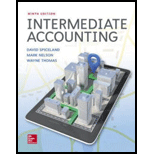
Effects of all
Financial statement: Financial statements are condensed summary of transactions communicated in the form of reports for the purpose of decision making. The financial statements reports, and shows the financial status of the business. The financial statements consist of the balance sheet, income statement, statement of retained earnings, and the cash flow statement.
Statement of cash flows: This statement reports all the cash transactions which are responsible for inflow and outflow of cash and result of these transactions is reported as ending balance of cash at the end of reported period.
To Explain: The need for an additional financial statement that reports the cash flows.
Explanation of Solution
The cash flow statement reports the actual cash inflow and outflow, which occurred during the accounting period. Though the cash flow affects the balances of the various accounts represented in the income statement and the balance sheet, the original cash transaction is not clear. This is accrual principle as the prepaid expenses, outstanding expenses, accrued income are all not shown by them.
Thus, preparing the cash flow statement gives a clear overview of all the expenses made and the cash received in the accounting period.
Want to see more full solutions like this?
Chapter 21 Solutions
Intermediate Accounting
Additional Business Textbook Solutions
Essentials of MIS (13th Edition)
Marketing: An Introduction (13th Edition)
Foundations Of Finance
Intermediate Accounting (2nd Edition)
Horngren's Accounting (12th Edition)
Economics of Money, Banking and Financial Markets, The, Business School Edition (5th Edition) (What's New in Economics)
- Can you help me find the accurate solution to this financial accounting problem using valid principles?arrow_forwardJazz Corporation owns 50 percent of the Vanderbilt Corporation stock. Vanderbilt distributed a $10,000 dividend to Jazz Corporation. Jazz Corporation's taxable income before the dividend was $100,000. What is the amount of Jazz's dividends received deduction on the dividend it received from Vanderbilt Corporation?arrow_forwardHow can I solve this financial accounting problem using the appropriate financial process?arrow_forward
- I am searching for the accurate solution to this general accounting problem with the right approach.arrow_forwardPlease provide the correct answer to this general accounting problem using valid calculations.arrow_forwardBillie Bob purchased a used camera (five-year property) for use in his sole proprietorship in the prior year. The basis of the camera was $2,400. Billie Bob used the camera in his business 60 percent of the time during the first year. During the second year, Billie Bob used the camera 40 percent for business use. Calculate Billie Bob’s depreciation deduction during the second year, assuming the sole proprietorship had a loss during the year. (Billie Bob did not place the asset in service in the last quarter.arrow_forward
- According to the income tax of Jamaica, a person is a resident if he (a) lives in the country, (b) resides in the country for not more than 183 days, (c) lives in a country 183 days or longer in any one year, or (d) lives in a country for 3 consecutive months in any one year.arrow_forwardHiarrow_forwardI need help with accountingarrow_forward
- General accountingarrow_forwardSolvearrow_forwardA local bakery sells 12,000 loaves of sourdough bread each year. The loaves are ordered from an outside supplier, and it takes 4 days for each shipment of loaves to arrive. Ordering costs are estimated at $18 per order. Carrying costs are $6 per loaf per year. Assume that the bakery is open 300 days a year. What is the maximum inventory of loaves held in a given ordering cycle? Solutionarrow_forward
- Principles of Accounting Volume 1AccountingISBN:9781947172685Author:OpenStaxPublisher:OpenStax College
 Financial Reporting, Financial Statement Analysis...FinanceISBN:9781285190907Author:James M. Wahlen, Stephen P. Baginski, Mark BradshawPublisher:Cengage Learning
Financial Reporting, Financial Statement Analysis...FinanceISBN:9781285190907Author:James M. Wahlen, Stephen P. Baginski, Mark BradshawPublisher:Cengage Learning Intermediate Accounting: Reporting And AnalysisAccountingISBN:9781337788281Author:James M. Wahlen, Jefferson P. Jones, Donald PagachPublisher:Cengage Learning
Intermediate Accounting: Reporting And AnalysisAccountingISBN:9781337788281Author:James M. Wahlen, Jefferson P. Jones, Donald PagachPublisher:Cengage Learning





